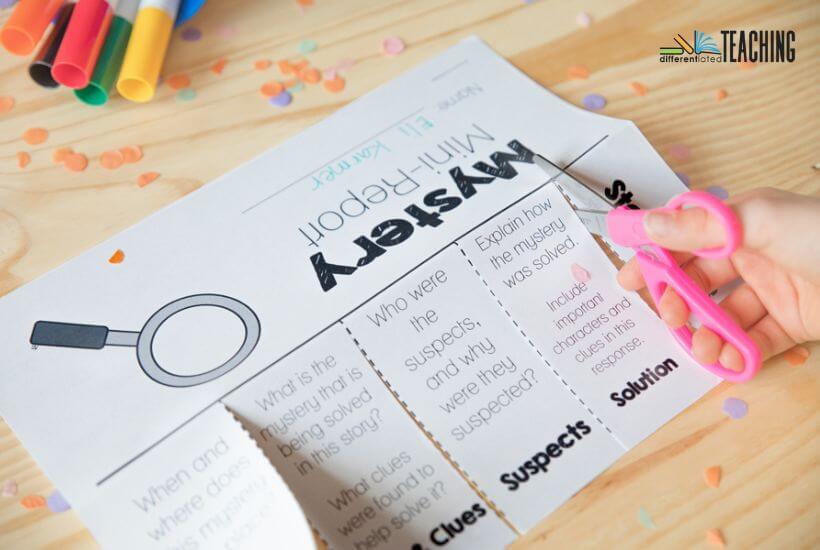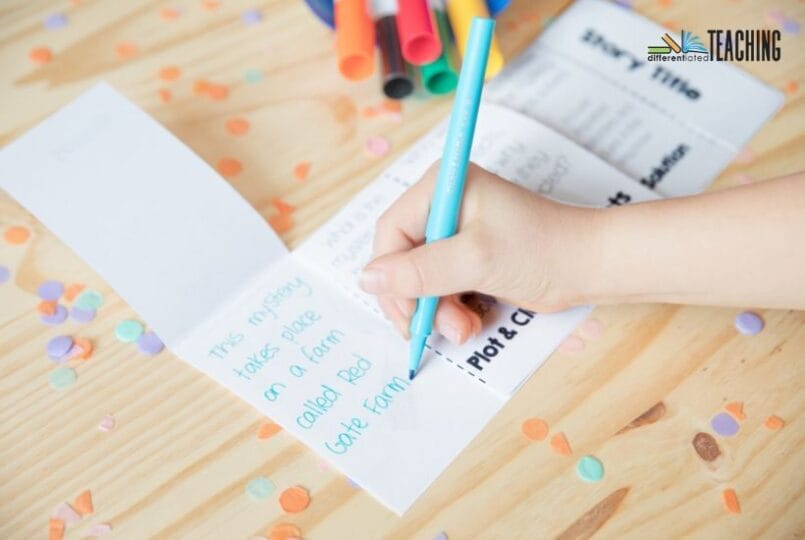How to Make Genre Study Stick (Without a Giant Project)
Let’s be honest: genre study sounds amazing in theory…Until it turns into a binder-busting project that eats up three weeks of instructional time and leaves you with 27 cereal box book reports to grade.
If you’re a classroom teacher trying to squeeze genre instruction between testing windows and guided reading groups…
Or a homeschool parent juggling multiple kids and wondering how to make “realistic fiction vs. fantasy” actually stick…
You’re not alone.
Genre instruction doesn’t have to mean a huge unit or a complicated group project. In fact, with the right tools and a little strategy, your students can deepen their understanding of genre in just a few minutes a day — even if they’re all reading different books.
In today’s post, I’m sharing three practical, classroom-tested strategies to make genre study more meaningful (and less overwhelming), plus a free printable to help you get started.
1. Anchor Genre Study in Student Choice
One of the biggest struggles I see teachers face with genre units is trying to force every student to read the same book, even when it doesn’t fit their level, interest, or reading goals.
Instead of whole-class novels for each genre, give students voice and choice. Let them pick their own books within a genre you’re studying. Then, use tools like graphic organizers, mini anchor charts, or genre-based flipbooks to help them identify and reflect on the features that define what they’re reading.
This works especially well for:
- Independent reading time
- Book clubs or literature circles
- Small group genre rotations
- Homeschool book baskets
Choice + structure = deeper engagement and better retention.
2. Reinforce Genre Traits with Focused Prompts
Genre study isn’t just about saying, “This is fantasy because it has dragons.”
It’s about helping students think critically about what makes a book fit a genre — and how those genre elements affect the story.
That’s why I use genre-specific prompts that go beyond summary or plot.
Here are a few examples:
- Myths: What is this story trying to explain about the real world?
- Historical Fiction: How do you know this story is set in the past? What real events or figures were included?
- Fairy Tales: Who represents good and who represents evil? How is that shown?
- Mysteries: What clues helped solve the case? Who were the suspects?

When students learn to spot these elements and articulate their purpose, they’re doing more than categorizing — they’re building genre awareness. And that transfers across texts, subjects, and future reading.
3. Use Genre Flipbooks to Assess Without the Overwhelm
I’ll be honest — I love a good project. But I don’t always have time for them.
That’s why I started using genre-based book report flipbooks. They give students just enough structure to organize their thinking, reflect on the text, and demonstrate comprehension… all on one page.
Here’s why they work:
- The format is predictable, so students know what to expect
- Each template is genre-specific, with prompts that align to the book type
- They’re short enough to finish in one or two sittings
- They work with any book — no need to print 10 different projects or design a new rubric
- And (bonus!) they look great displayed or shared in portfolios
Whether you’re using them during a formal genre study, assigning them as independent reading response, or rotating them through literacy centers, they give you meaningful student work without adding hours to your prep.
Free Biography Book Report Flipbook
Want to try one of these flipbooks out for yourself? I’ve pulled my biography mini-report template for you to use as a freebie!
It’s perfect for any biography project — whether you’re teaching a full nonfiction unit, celebrating Black History or Women’s History Month, or just weaving nonfiction into your weekly reading.
Students will reflect on the person’s life, accomplishments, and impact — all in a format that’s visually structured and easy to complete.
Ready to Simplify Your Genre Study?
If you’re ready to take the pressure off your genre instruction (without sacrificing the learning), I’ve bundled 20 fiction and nonfiction book report flipbooks into one simple, print-and-go resource.
It’s perfect for:
- Teachers who need differentiated reading response tools
- Homeschool parents who want structured comprehension activities
- Interventionists or SPED teachers looking for flexible book projects
- Anyone teaching grades 2–4 who wants to make reading response work
???? Grab the Foldable Book Report Templates for Grades 2–4 here
A Better Way to Teach Genre (Without the Chaos)
Genre study doesn’t need to feel like a marathon.
It doesn’t need glitter, glue sticks, or elaborate projects.
It just needs to be intentional, accessible, and repeatable.
With the right structure, a little student choice, and a genre-specific flipbook or two, you can make genre study stick — and keep your sanity, too.










